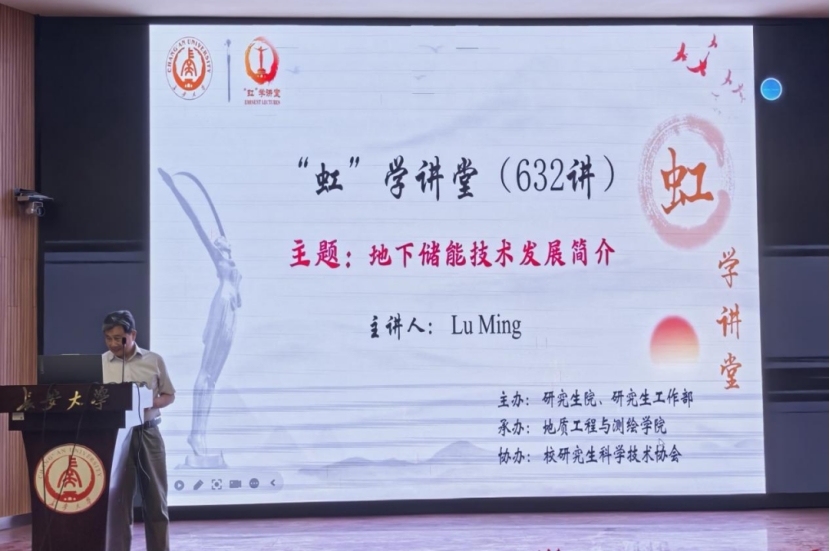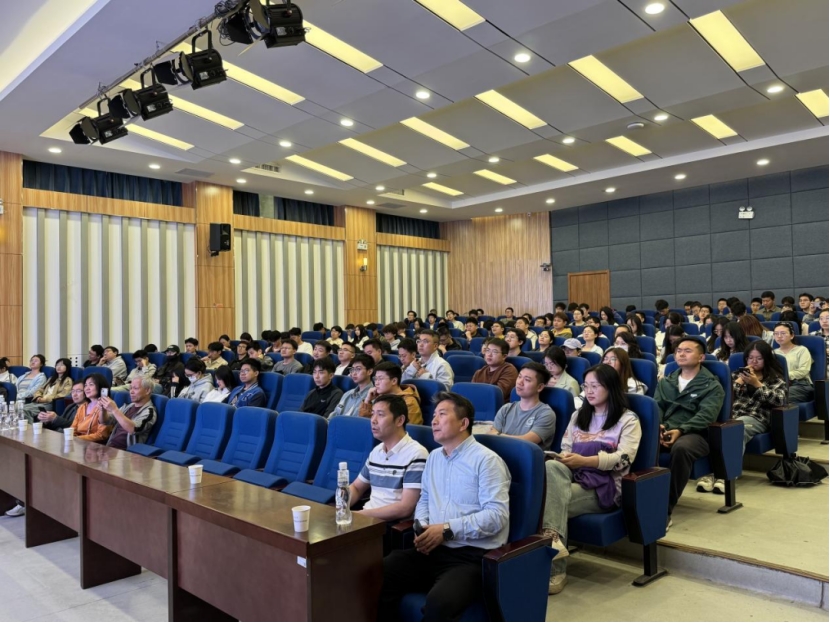On the afternoon of April 21, the 632nd session of the "Hong" Academic Lecture Series was successfully held at the Bosheng Lecture Hall in the East Campus of the South Campus. The event was hosted by the Graduate School and the Graduate Student Affairs Office, organized by the College of Geological Engineering and Geomatics, and co-organized by the University Graduate Student Science and Technology Association. Academician Lu Ming from the Norwegian Academy of Technological Sciences delivered a report titled "Introduction to the Development of Underground Energy Storage Technology." The lecture was chaired by Professor Zhai Yue from the College of Geological Engineering and Geomatics, with over 170 faculty members and students from related colleges in attendance.

Academician Lu Ming Delivers the Report
The report primarily focused on seven aspects: unlined rock caverns for petroleum storage, salt rock caverns for high-pressure natural gas storage, unlined rock caverns for natural gas storage, lined rock caverns for high-pressure natural gas storage (LRC), underground storage of liquefied natural gas (LNG), compressed air energy storage (CAES), and underground hydrogen storage.
First, Academician Lu Ming pointed out that, driven by the global energy transition and the "dual-carbon" goals, underground energy storage technology has become a critical solution for addressing the volatility of renewable energy and enhancing grid flexibility, owing to its scalability, stability, and environmental friendliness. He then introduced existing mainstream technologies and analyzed their mechanisms for storing and releasing energy through underground spaces, such as abandoned mines and salt rock caverns. He also compared the efficiency, costs, and geographical adaptability of different technologies.
Finally, Academician Lu Ming emphasized that in the future, underground energy storage will not only serve as a "stabilizer" for energy systems but also as a core support for building new power systems. Its large-scale application will provide a key technological pathway for the global low-carbon energy transition.

Lecture Scene



